The other side of field work
One of the goals of my project was to find out whether sawfishes are, or have the potential to be, a flagship species for the geographical region and ecosystems they are found in. As this first field season for Sharks And Rays Australia (SARA) comes to an end – and with it the project ‘Sawfishes: spreading the love’ – it is time for an assessment. It has been an unforgettable year and this is what this post is about: the other side of our sawfish research, all the other elements that come under the umbrella of our flagship species. This post is a tribute to the ecosystems that we have entered over the past year, the people we have met, the animals that we were lucky enough to encounter and some unforgettable moments. Enjoy!
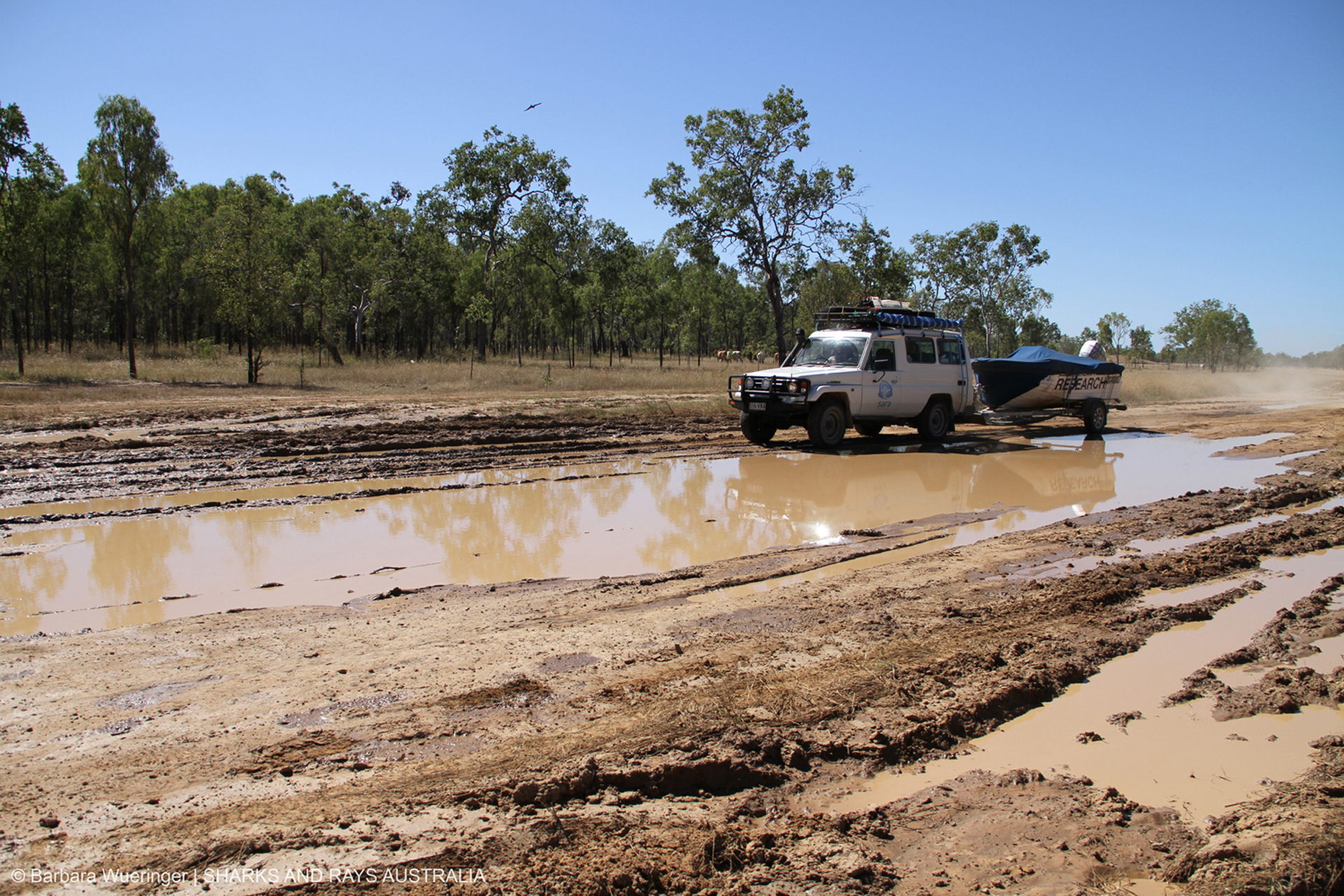
Some of our research sites are hard to reach because roads are easily washed away. Photo © Barbara Wueringer | Sharks and Rays Australia
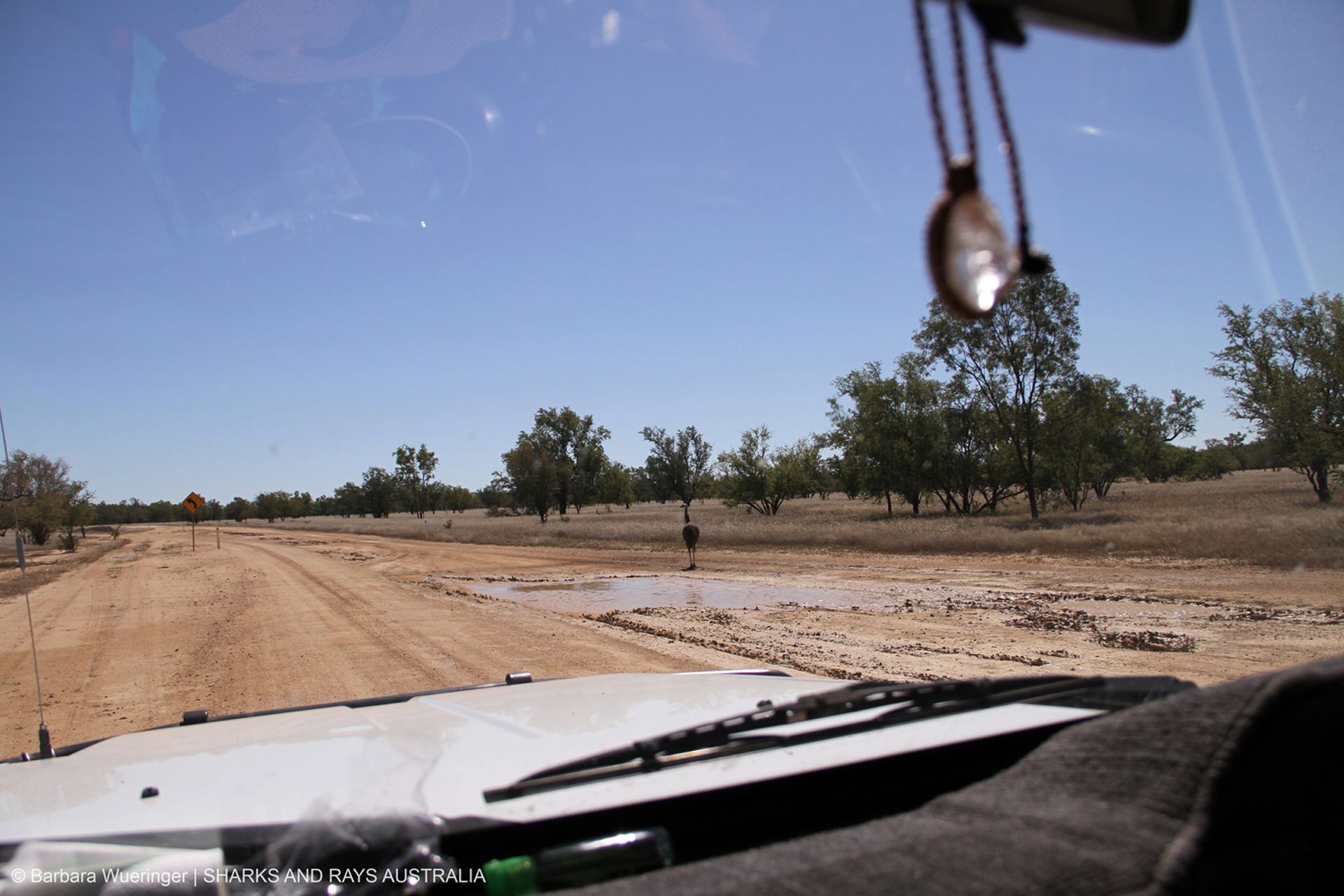
As we came closer to this large puddle – it used to be the middle of the road – we saw a soaking wet emu getting up and running away. We had interrupted its bath. Photo © Barbara Wueringer | Sharks and Rays Australia
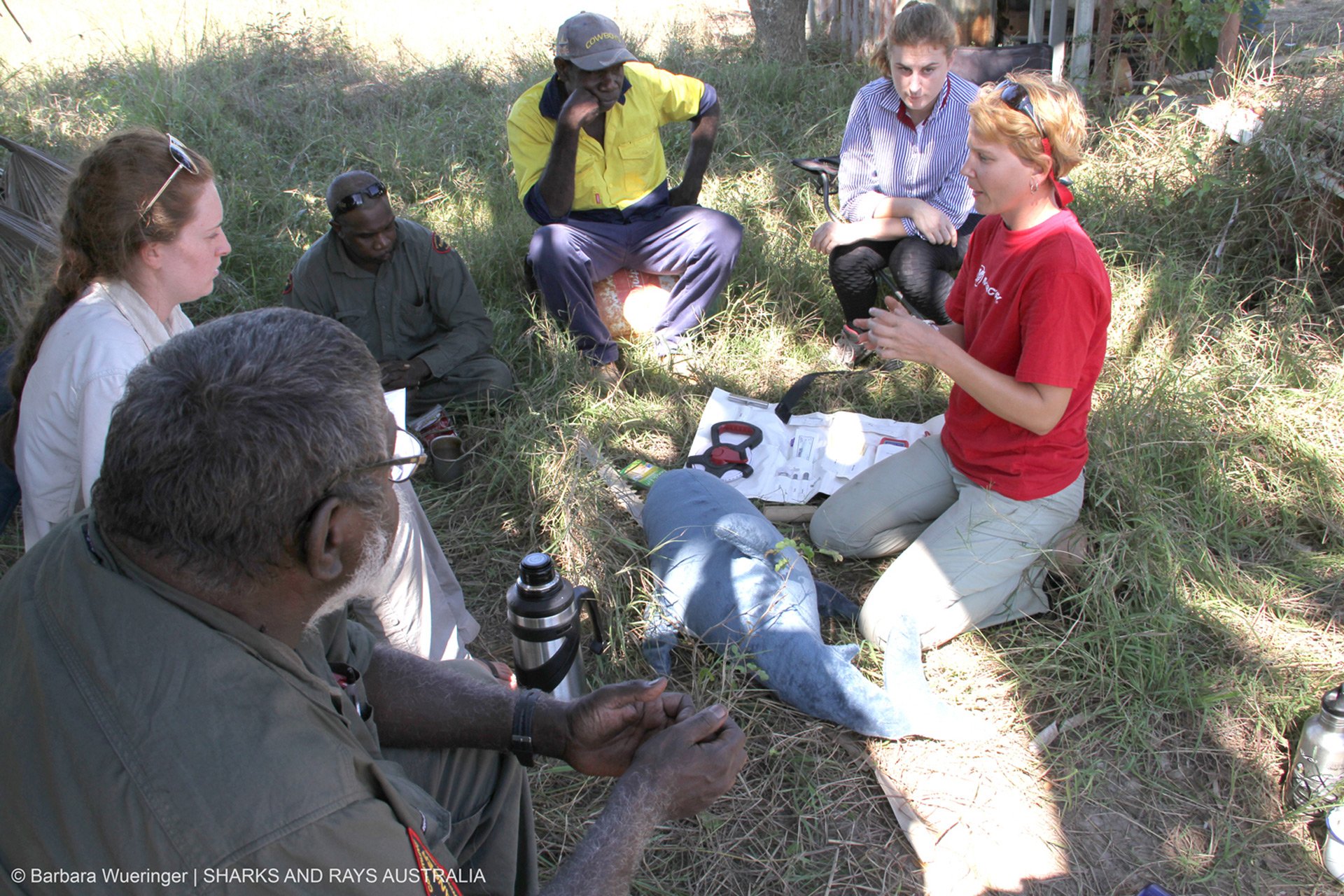
Barbara explains our field-work methods to the SARA volunteers, the Kowanyama Land and Sea Rangers and the Traditional Owners of the land we were working on. Photo © Barbara Wueringer | Sharks and Rays Australia
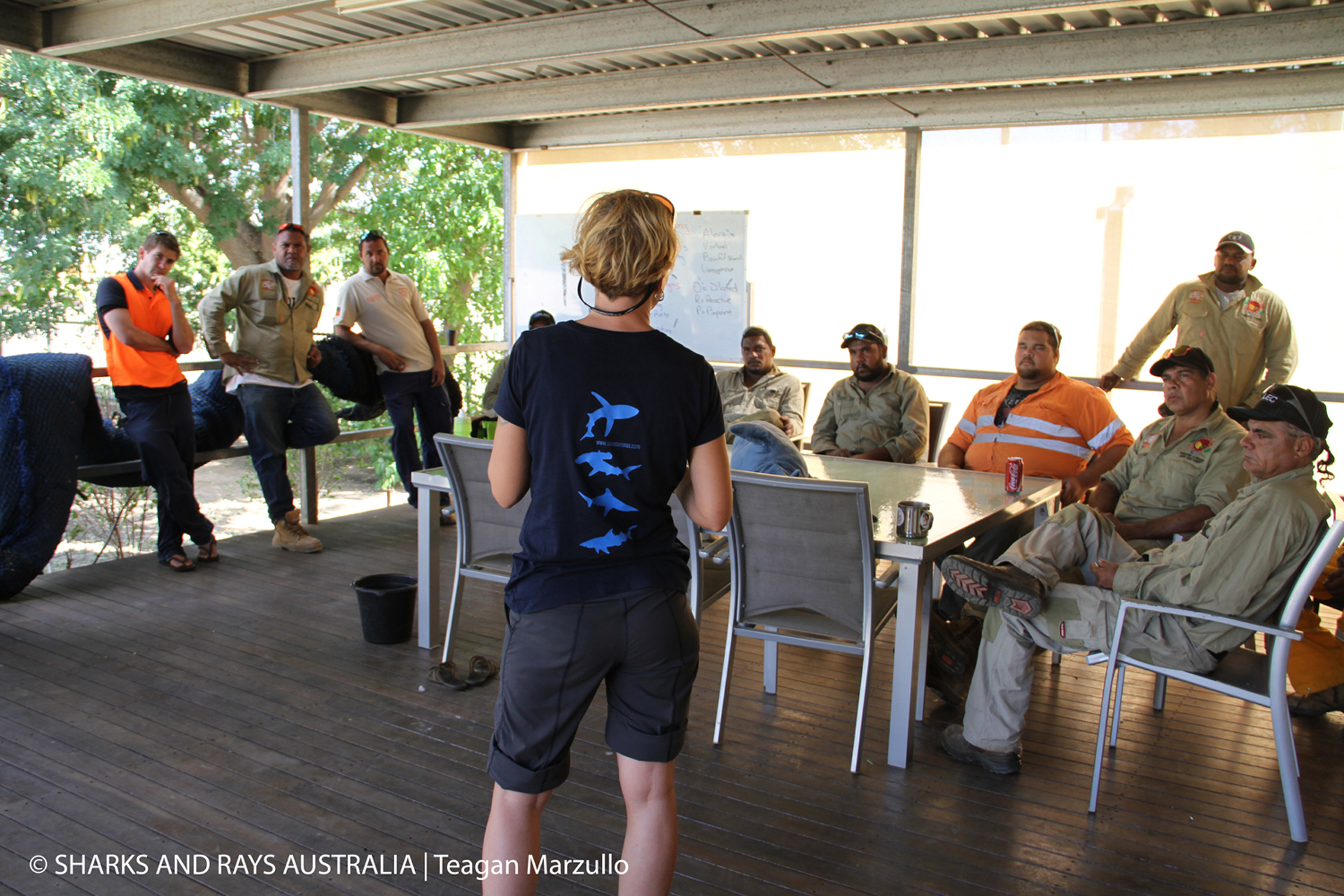
Barbara explains our research and methods to the Gangalidda-Garawa Rangers of the Carpentaria Land Council Aboriginal Corporation. A sawfish forms part of this group’s logo, indicating the traditional importance of these animals in the region. Photo © Teagan Marzullo | Sharks and Rays Australia
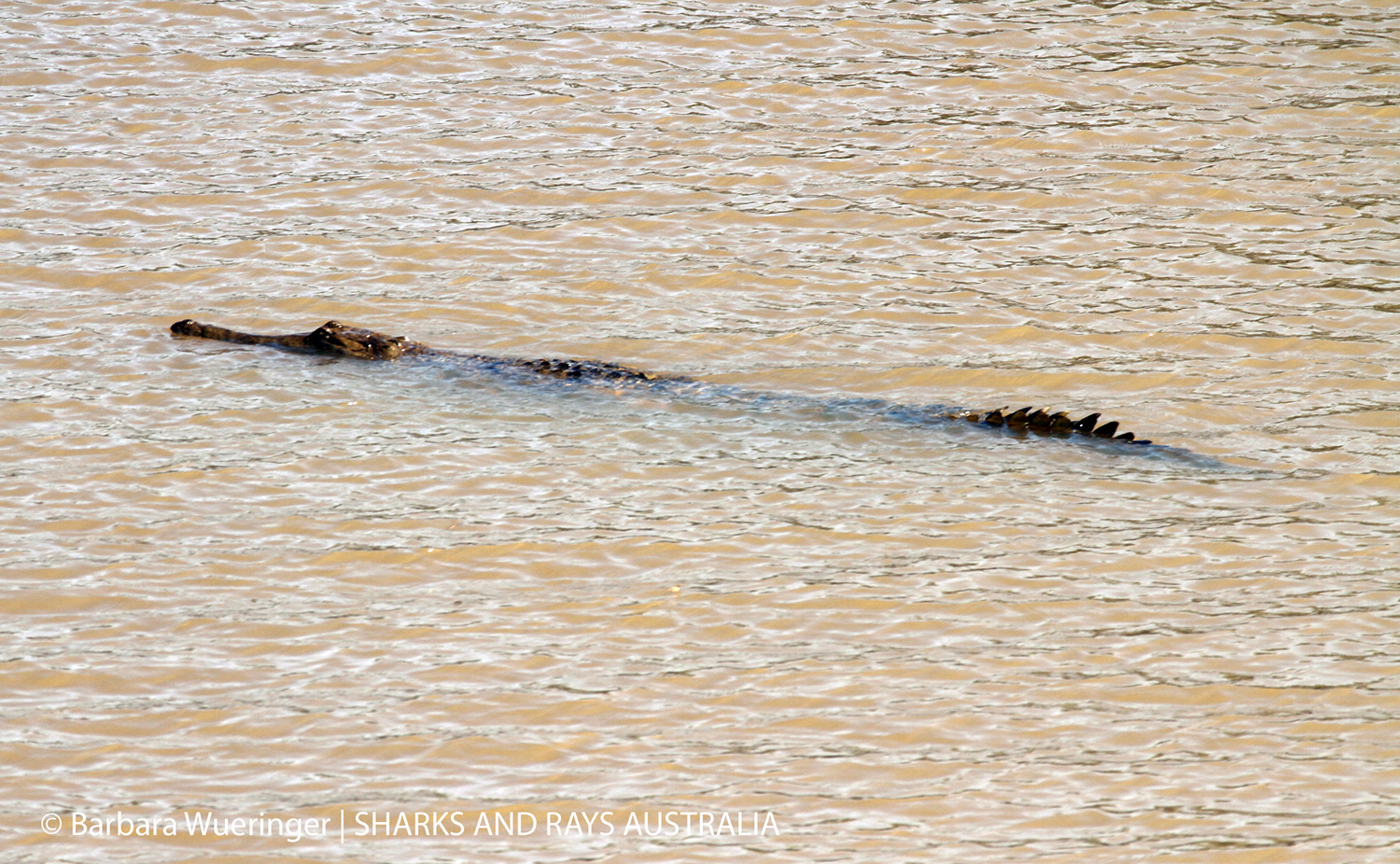
This freshwater crocodile Crocodylus johnstoni was about 2.5 metres long. Photo © Barbara Wueringer | Sharks and Rays Australia
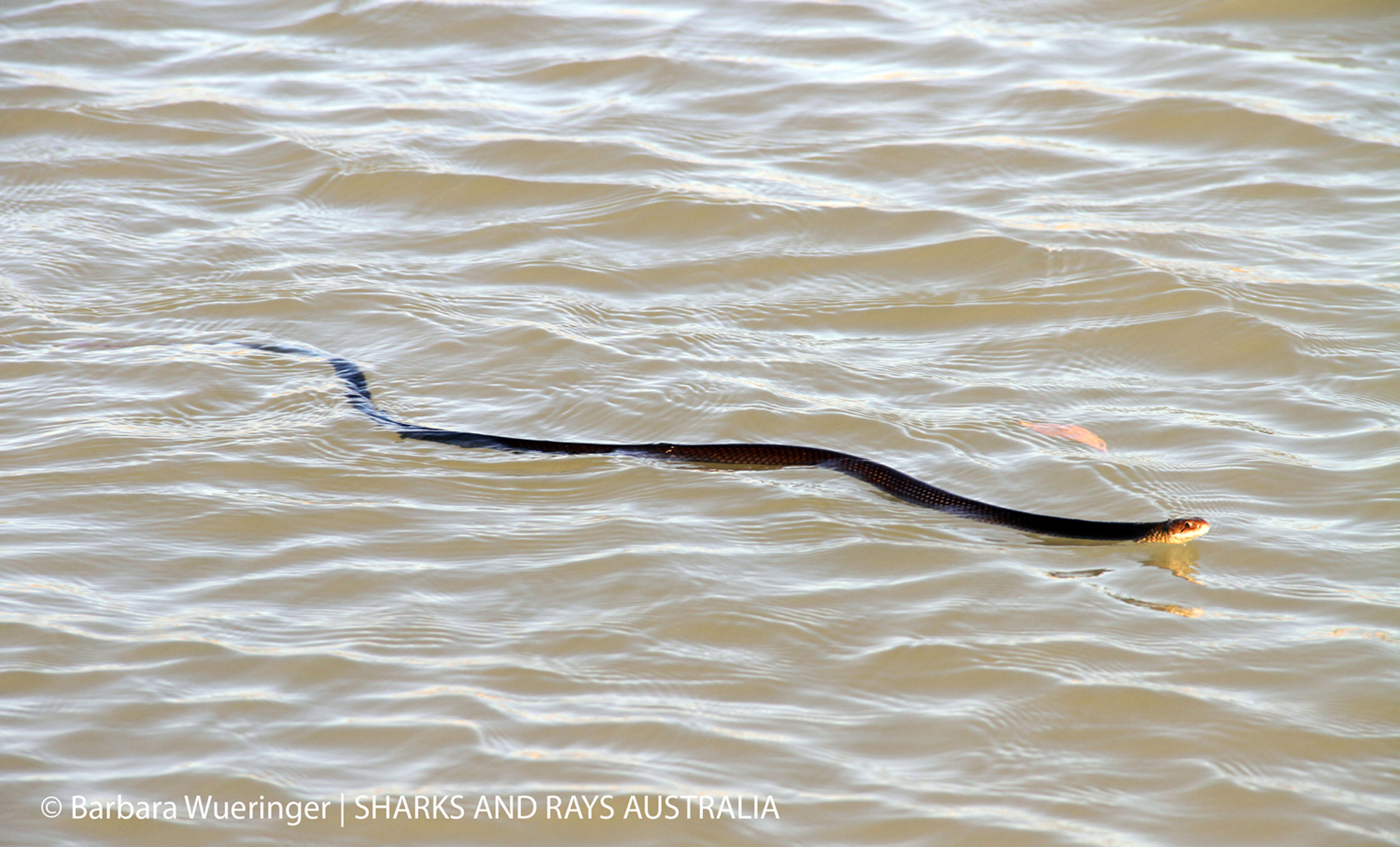
A black whip snake Demansia vestigiata swims across the river and almost into our gill net. A second one was rescued from the net and delivered to the other side of the river. Photo © Barbara Wueringer | Sharks and Rays Australia
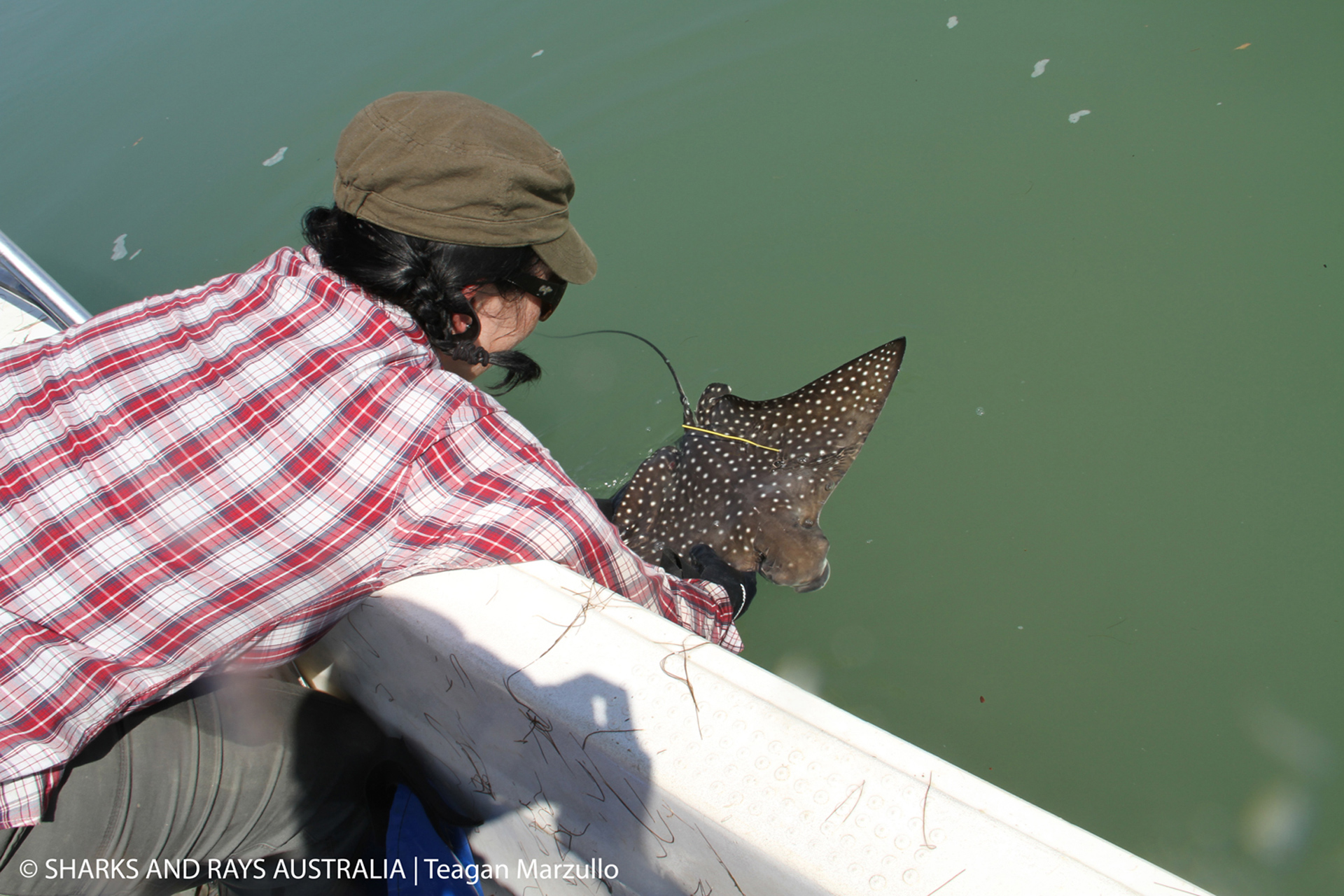
Our volunteer Laura releases a juvenile eagle ray Ateobatus narinari. Photo © Barbara Wueringer | Sharks and Rays Australia
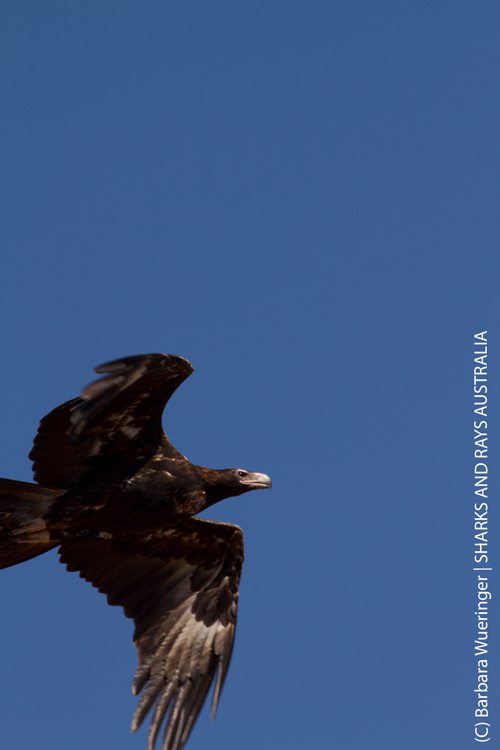
A wedge-tailed eagle Aquila audax watches us from above. Photo © Barbara Wueringer |
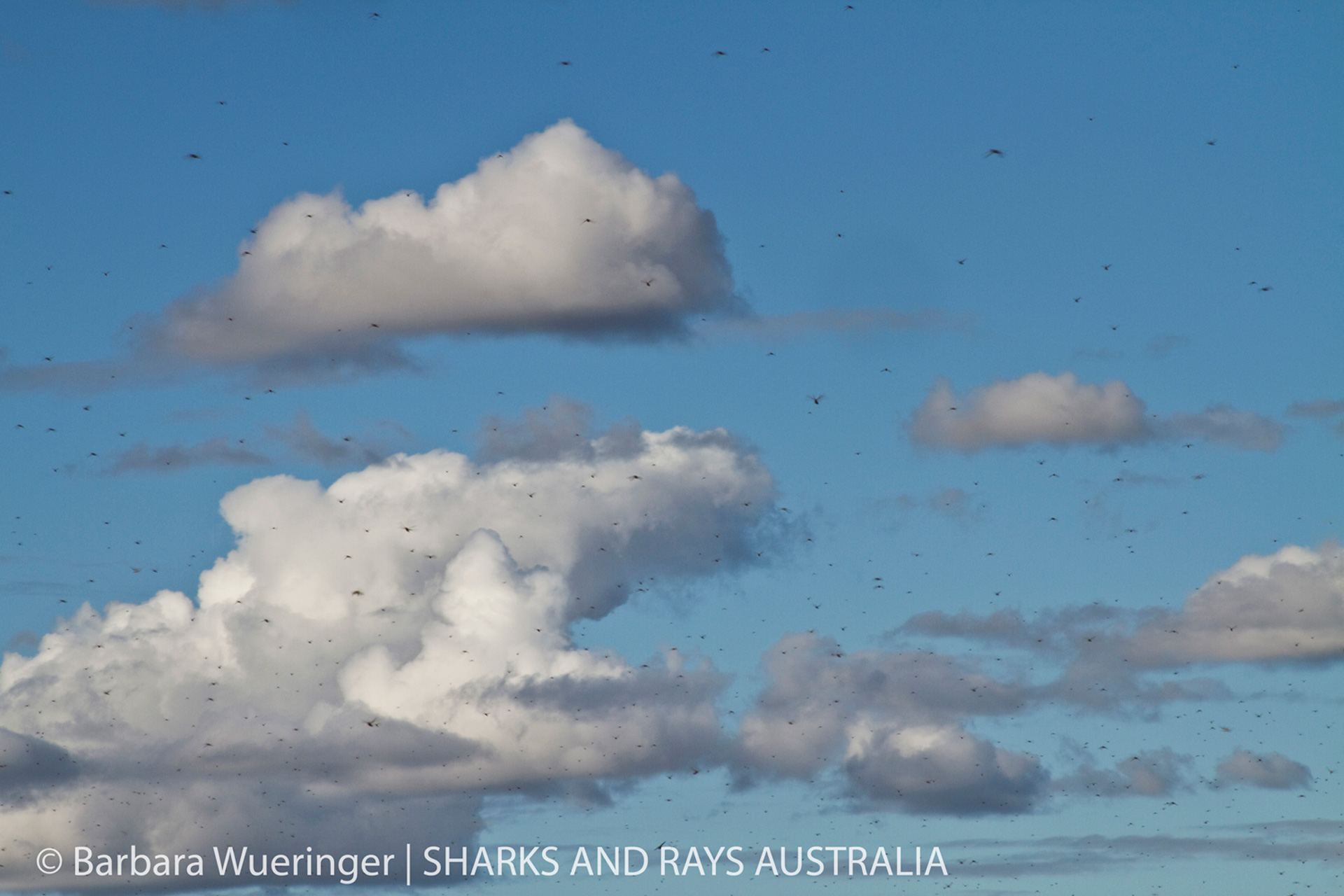
Every little dot in this image is a locust. The swarm we drove through in the southern Gulf of Carpentaria was more than 10 kilometres long! Photo © Barbara Wueringer | Sharks and Rays Australia
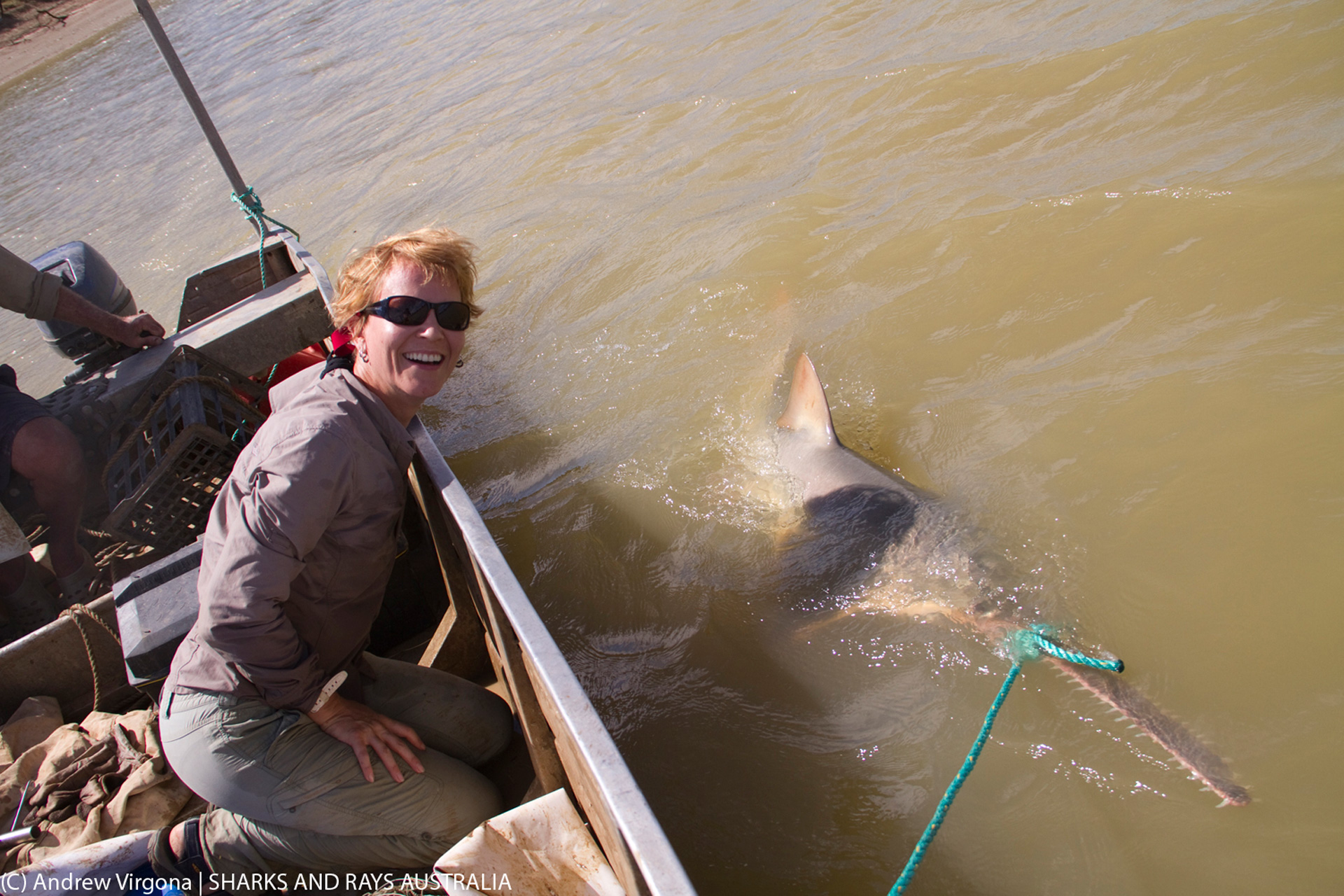
A juvenile freshwater sawfish Pristis pristis is tied to the boat and slowly brought into shallower water to be worked up. Photo © Andrew Virgona | Sharks and Rays Australia
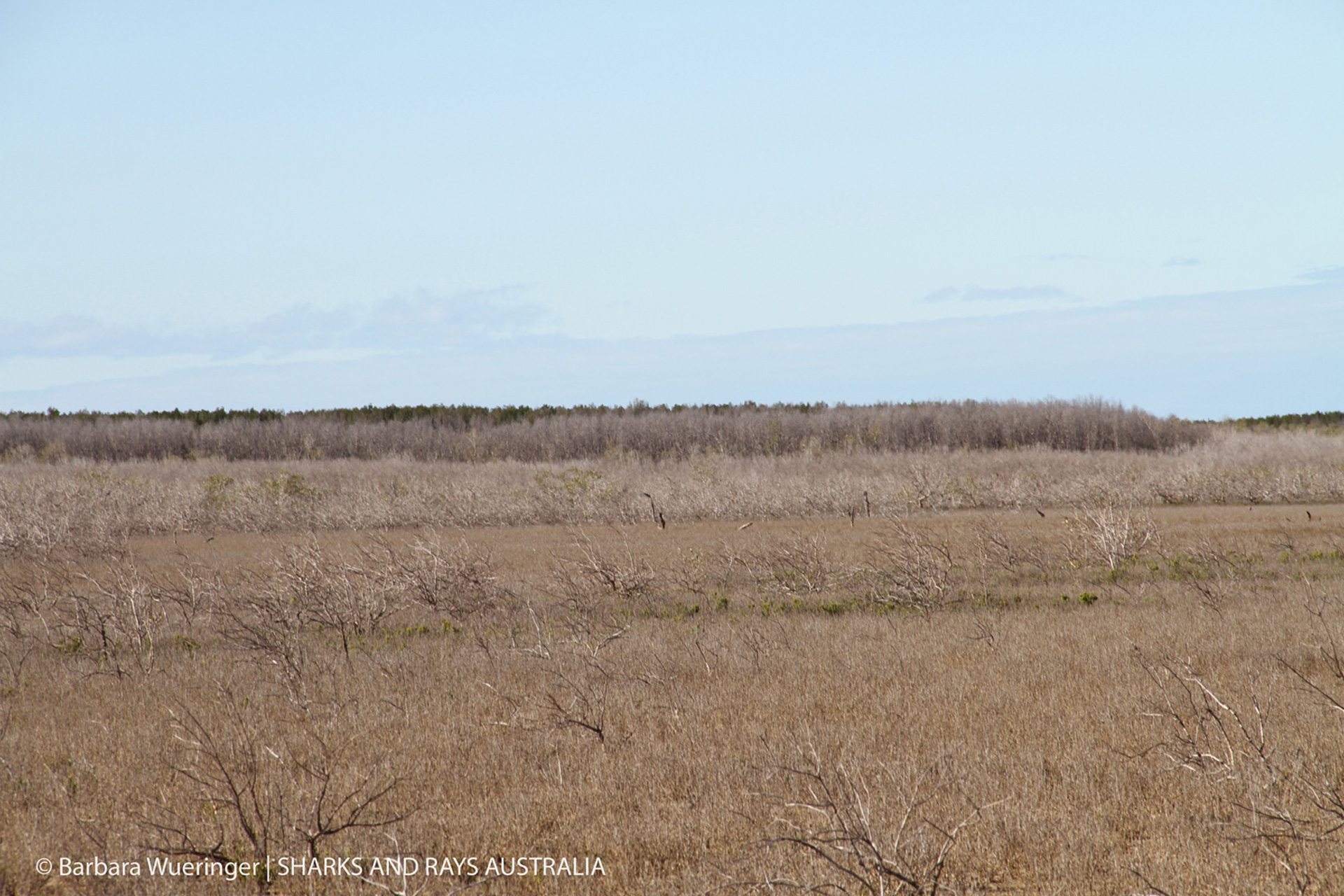
Most people have heard about this year’s El Nino event, which killed approximately 22% of the coral cover of the Great Barrier Reef, but not so many know about the extensive, and unexplained, mangrove die-off that occurred in the southern Gulf of Carpentaria, affecting kilometre-long stretches of mangroves. What will this mean for the animals that inhabit mangroves and for the functionality of this important ecosystem? Photo © Barbara Wueringer | Sharks and Rays Australia
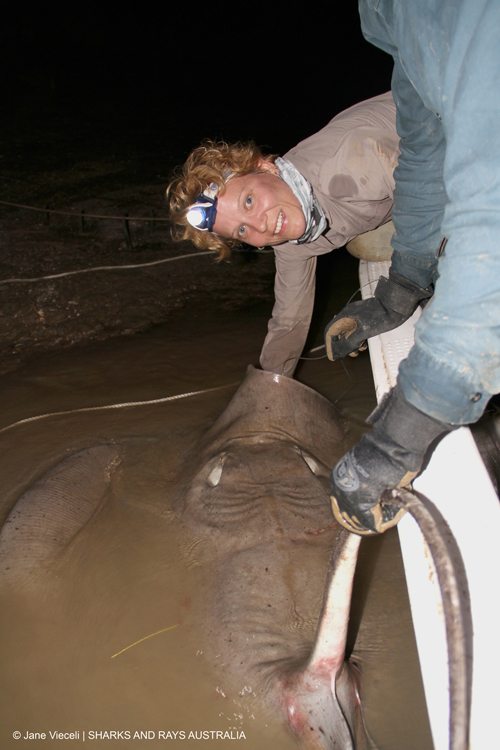
A freshwater whipray Himantura dalyensis, with a disc width of 1.2 metres, is ready to be released after being tagged. Removing the hook from the animal’s mouth proved to be the most difficult part of the exercise. Photo © Jane Vieceli | Sharks and Rays Australia
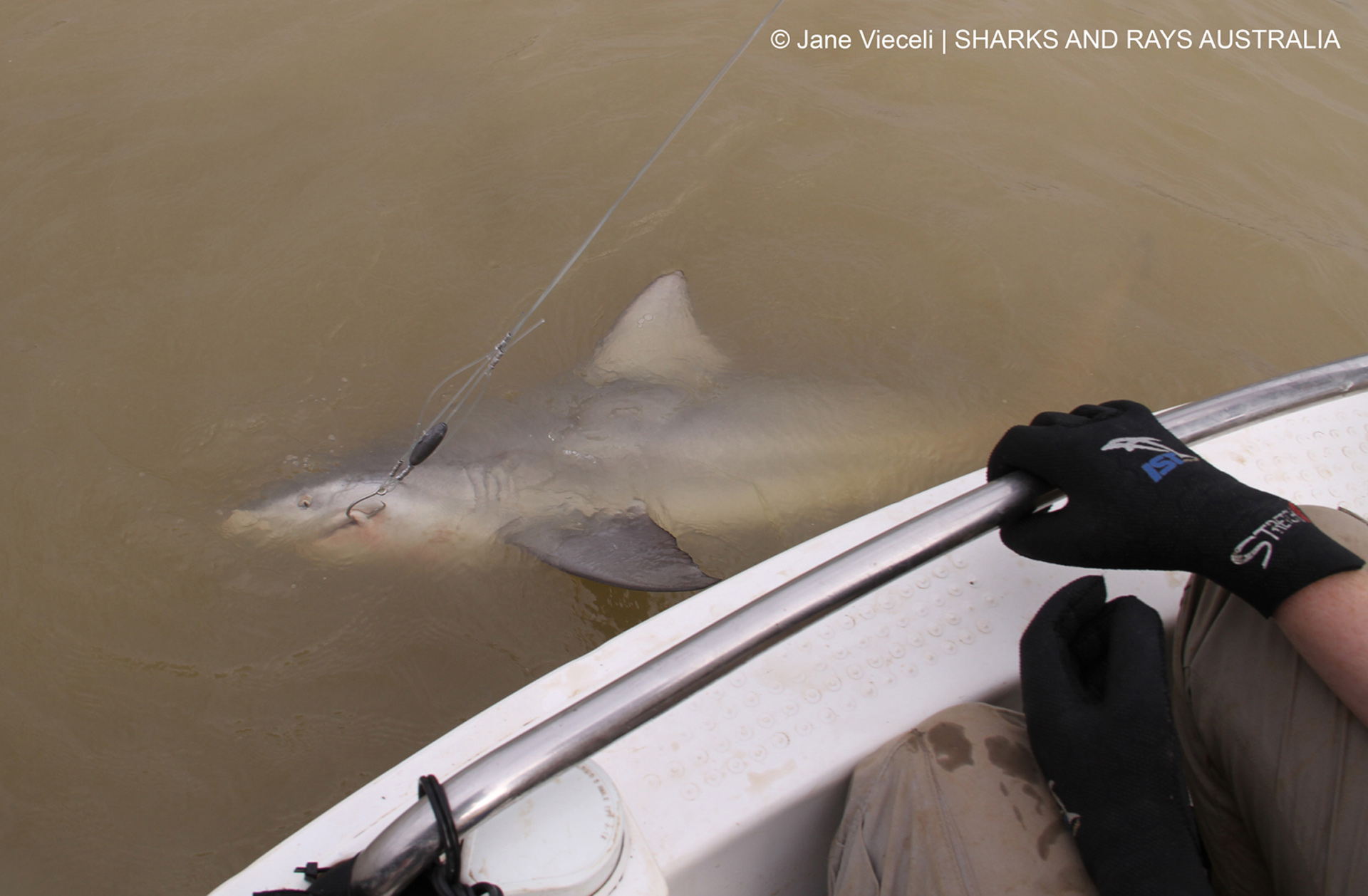
We’ve just caught a bull shark Carcharhinus leucas! Photo © Jane Vienceli | Sharks and Rays Australia
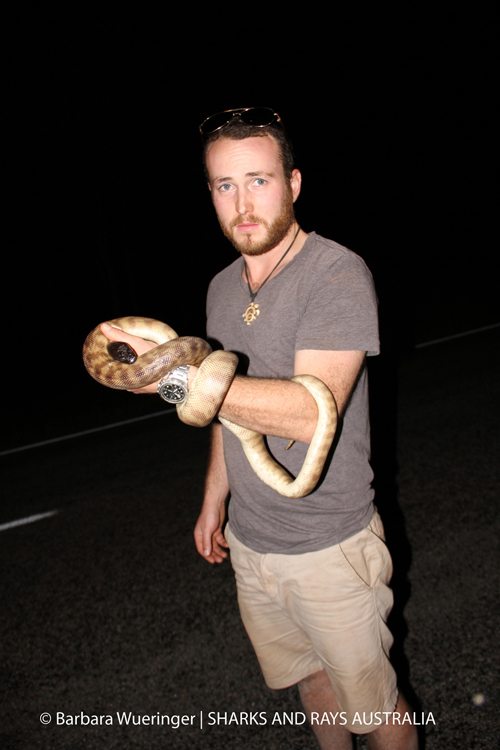
Our volunteer Stuart, who is a professional reptile handler, helped this black-headed python Aspidites melanocephalus across the road to prevent it from becoming road kill. Photo © Barbara Wueringer | Sharks and Rays Australia

Jellyfish often make their way upstream into the brackish waters of the rivers leading into the Gulf of Carpentaria. Photo © Barbara Wueringer | Sharks and Rays Australia
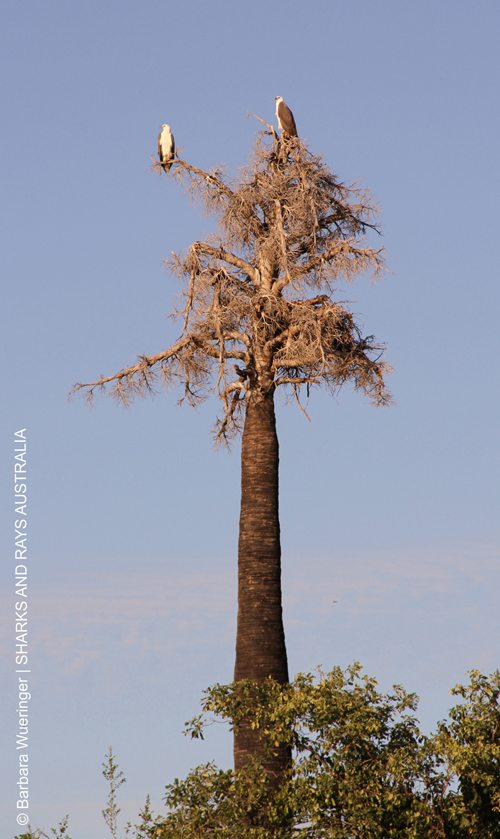
Two white-bellied sea eagles Haliaeetus leucogaster soak up the warmth of the morning sun on a dead cabbage palm Coryphan utan. This palm grows to a height of about 20 metres and at the age of 30–40 years it produces a five-metre-high inflorescence that bears about one million flowers. After fruiting, the plant dies. Photo © Barbara Wueringer | Sharks and Rays Australia
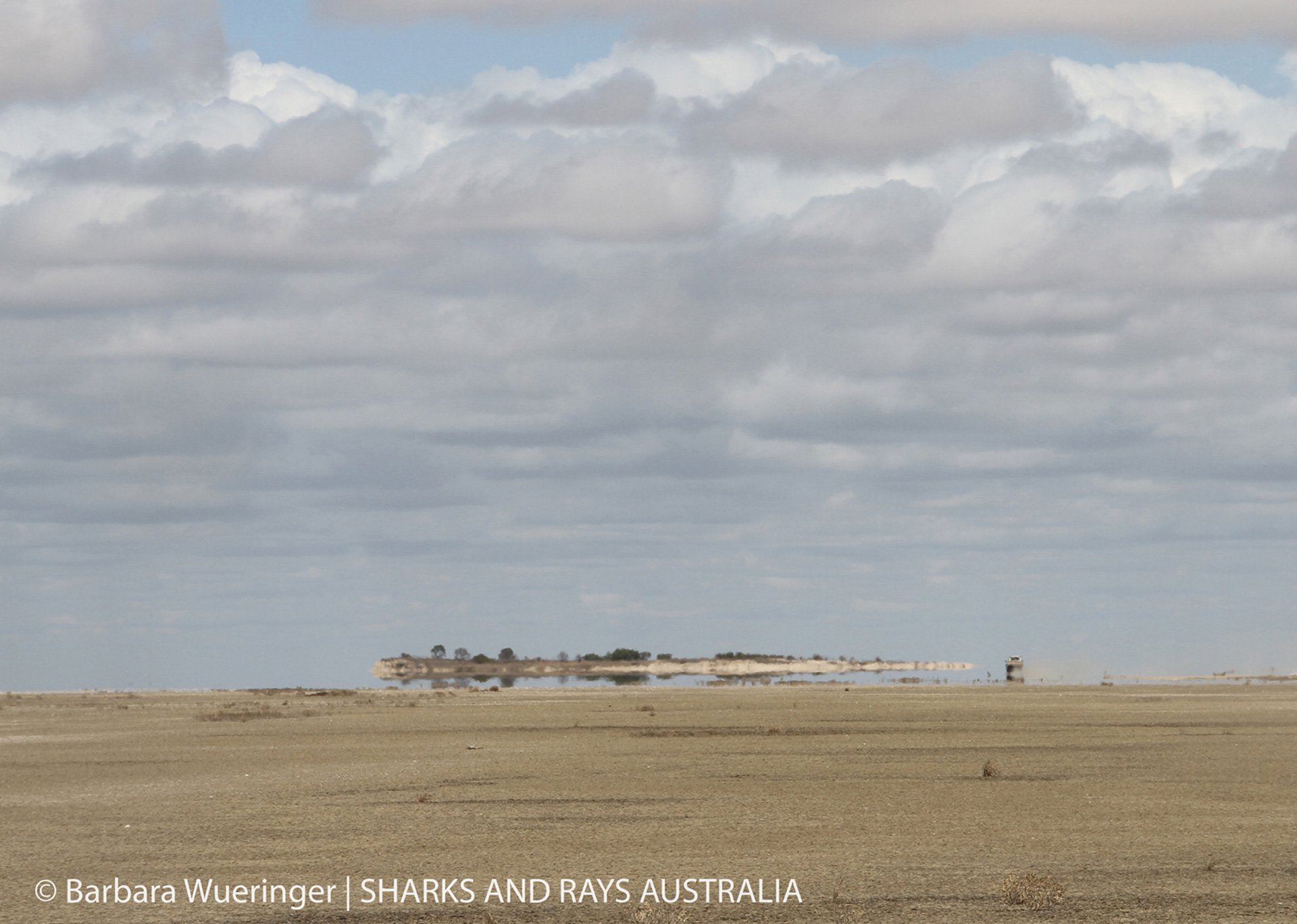
Driving across the salt plains to our sampling site in the southern Gulf of Carpentaria. Photo © Barbara Wueringer | Sharks and Rays Australia
